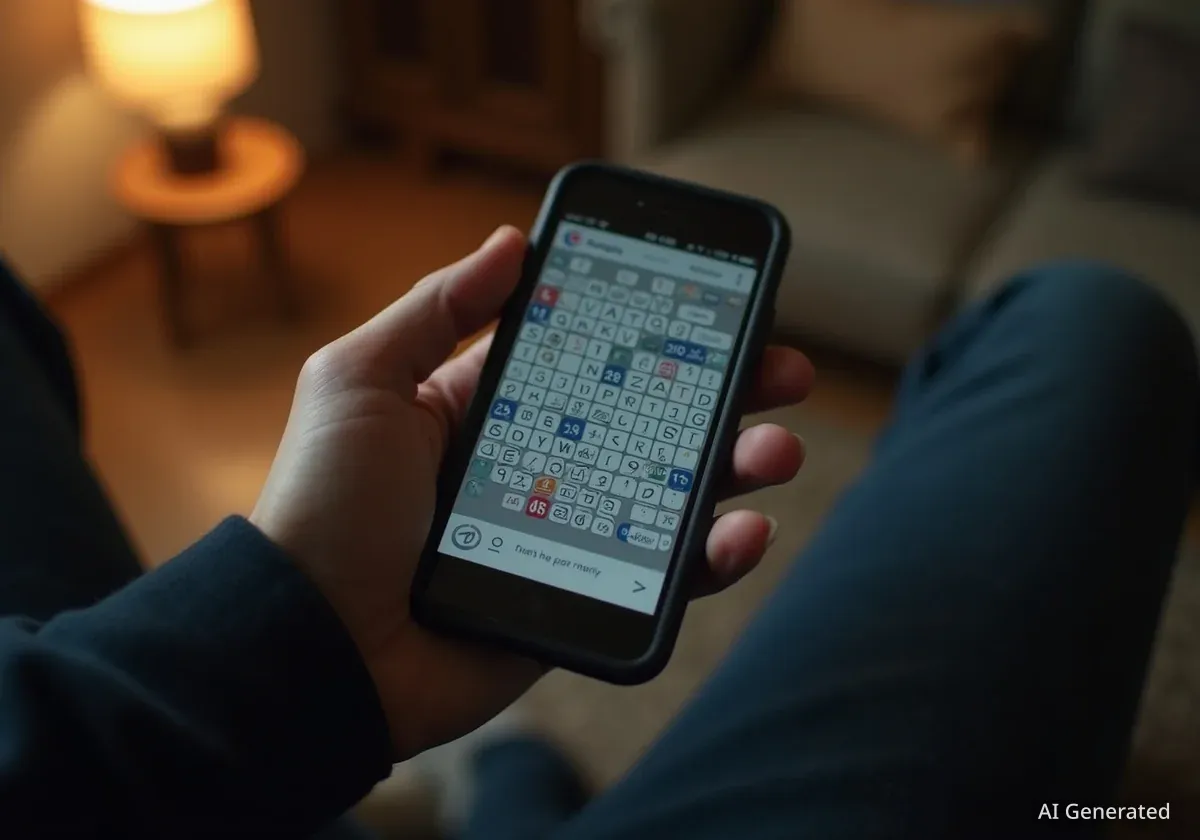The New York Times' daily logic puzzle, Pips, presents players with a fresh challenge each day. This guide provides a detailed walkthrough and the complete solutions for all difficulty levels—Easy, Medium, and Hard—for the puzzles released on Monday, October 13, 2025.
Key Takeaways
- This article contains hints and full solutions for the NYT Pips puzzles of Monday, October 13.
- Pips is a logic game where players place dominoes on a grid to satisfy various mathematical conditions.
- The guide offers a step-by-step strategy for solving the Hard puzzle, which involves identifying key constraints early.
- Understanding the different conditions, such as equals (=), not equals (≠), and greater than (>), is essential for success.
How to Play NYT Pips
NYT Pips is a digital puzzle game that combines the classic feel of dominoes with logic-based challenges. The primary objective is to place all provided dominoes onto a grid, ensuring that every condition within designated colored zones is met. Players must use strategic thinking to ensure every piece fits correctly while satisfying all rules.
The game board is a grid divided into various colored sections. Each section has a specific rule or "condition" that the pips (dots) on the dominoes placed within it must follow. Players can click on dominoes to rotate them before placing them on the grid. The puzzle is only solved when all dominoes are used and every condition is satisfied simultaneously.
Understanding the Game's Conditions
To succeed at Pips, players must be familiar with the symbols that define the rules for each colored group of tiles. These conditions are the core of the puzzle's logic.
- Equals (=): All pips within this colored group must have the same number. For example, if one tile has a 3, all other tiles in that group must also be 3s.
- Not Equals (≠): All pips within this group must have different numbers. If the group has three tiles, you could have a 1, a 2, and a 5, but not two 1s.
- Greater Than (> X): The sum of all pips in the group must be greater than the number shown. For example, for >4, the total could be 5, 6, or higher.
- Less Than (< X): The sum of all pips in the group must be less than the number shown.
- Exact Number (X): The sum of all pips in the group must equal the exact number shown.
- Blank Tiles: Any tile without a symbol has no condition and can be filled with any number.
Solutions for Pips on Monday October 13
This section provides the solutions for the Easy, Medium, and Hard puzzles for October 13. While the Easy and Medium puzzles are generally straightforward, the Hard puzzle often requires a more detailed strategy to solve efficiently. The solutions are presented below, followed by a detailed breakdown of the logic used for the Hard tier.
Easy and Medium Tier Solutions
For players seeking a quick confirmation, the solutions for the Easy and Medium puzzles are outlined here. These puzzles serve as a good warm-up for the more complex challenges presented in the Hard tier.
The Easy puzzle solution for October 13 involves simple placements with minimal overlapping conditions, making it an accessible entry point for the day's puzzles.
The Medium puzzle solution increases the complexity slightly, requiring players to consider how domino placements affect multiple colored groups at once. Careful rotation and planning are key.
Detailed Walkthrough for the Hard Puzzle
The Hard puzzle for October 13, while labeled as difficult, was noted by many players as being more straightforward than usual. The key to solving it efficiently is identifying the most restrictive condition on the board and building the solution from there. In this case, the largest group with an "equals" condition provides the best starting point.
Strategic Starting Point
The most constrained group on the board is the blue section, which requires three tiles to all have the same number. By analyzing the available dominoes, it becomes clear that only the number '1' appears on enough domino halves to satisfy this condition. Establishing this fact first makes subsequent placements much easier.
Step 1: Establishing the Foundation
The initial phase of the solution involves placing dominoes that satisfy multiple conditions at once, using the blue group as an anchor. The logic begins by looking at the available high-number dominoes.
- Count the available pips on all dominoes. Notice that there are three dominoes with a '1'. This confirms that the three blue tiles in the Blue = group must all be 1s.
- Start with the purple tile (Purple >1). Place the 6/5 domino so the 6 is in the purple tile and the 5 is in the adjacent pink tile. This begins fulfilling the Pink 10 condition.
- Next, place the 5/0 domino to complete the Pink 10 group (5+5=10) and place the 0 in the orange group.
- Finally, place the 0/6 domino to complete the Orange = group (0=0), with the 6 extending into a blank tile.
Step 2: Placing the Anchor Dominoes
With the right side of the puzzle established, the next step is to place the dominoes connected to the central blue group. This connects the two halves of the grid.
The strategy here is to use the '1' pips from the blue group to satisfy the conditions of the neighboring dark blue and green sections.
- Take the 1/6 domino and place it with the '1' in the Blue = group and the '6' in the Dark Blue >4 group. This immediately satisfies the dark blue condition.
- Next, take the 1/4 domino and place it with the '1' in the Blue = group and the '4' in the Green = group. This sets the requirement for the other green tile to also be a '4'.
Step 3: Completing the Puzzle
The final moves involve placing the last two dominoes. Since the previous steps were logically sound, these pieces should fit perfectly into the remaining empty slots without any contradictions.
The remaining dominoes are the 4/3 and the 1/2. Their placements are now straightforward.
"Once the central blue group is identified as all '1s', the rest of the puzzle unfolds with very little difficulty. The solution path becomes clear, and each subsequent piece has a logical place."
Place the 4/3 domino so that the '4' completes the Green = group (4=4), with the '3' going into an adjacent blank tile. Finally, place the last 1/2 domino into the remaining two slots, with the '1' completing the Blue = group. With this last move, all dominoes are placed, and all conditions on the board are met, successfully solving the puzzle.




